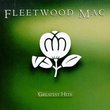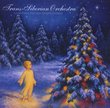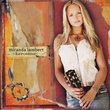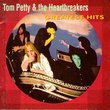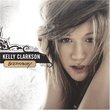| All Artists: Taikos, Benoit Jutras, Rene Dupere Title: Mystere Live Members Wishing: 0 Total Copies: 3 Label: RCA Release Date: 11/12/1996 Album Type: Soundtrack, Live Genres: International Music, New Age, Pop, Soundtracks Styles: North America, Meditation Number of Discs: 1 SwapaCD Credits: 1 UPCs: 090266859627, 090266859641 |
Search - Taikos, Benoit Jutras, Rene Dupere :: Mystere Live
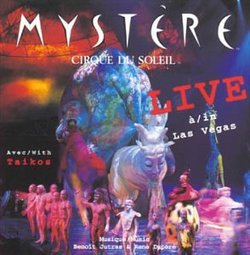 | Taikos, Benoit Jutras, Rene Dupere Mystere Live Genres: International Music, New Age, Pop, Soundtracks
![header=[] body=[This CD is available to be requested as disc only.]](/images/attributes/disc.png?v=4eeb5dd5) ![header=[] body=[This CD is available to be requested with the disc and back insert.]](/images/attributes/disc_back.png?v=4eeb5dd5) ![header=[] body=[This CD is available to be requested with the disc and front insert.]](/images/attributes/disc_front.png?v=4eeb5dd5) ![header=[] body=[This CD is available to be requested with the disc, front and back inserts.]](/images/attributes/disc_front_back.png?v=4eeb5dd5) |
Larger Image |
CD DetailsSimilarly Requested CDs
|
CD ReviewsMuch better than the original Mystere 10/30/1999 (5 out of 5 stars) "I am a huge fan of Cirque du Soleil, and have almost all of the music. I believe that when Rene Duprere retired and Benoit Jutras stepped in, he did them a huge favor. Monsieur Jutras has altered the original music slightly, but just enough to actually give it some life. Pardon me, but compared to this, the original score on the studio CD is dead."Kunya Sobe," though about a minute and a half shorter, is definitely much livelier and better to listen to. "Kunya Sobe" is the song Jutras altered the most. Other than that, he barely touched "Egypte," so it still has a mysterious essence to it. "En Ville" and "Kalimando" were also revived, but both have hardly been changed. "Rondo" is better than the original also. I also like the extra songs that were put in later that were done only by Jutras.Do not feel that I am putting Rene Dupere down. I loved his work on "Alegria" and "Saltimbanco." I just like the "kick" that Benoit Jutras puts into his music. Trust me, if you want to get a Mystere soundtrack, GET THIS ONE. Do not get the original, unless you want to compare the two, which is what I did.If you like this Mystere, get the soundtracks to "O" and "Quidam" as well. These two were done only by Benoit Jutras. You'll love them." The last guy missed the boat J. K. Grence | Superstition Mountain, AZ | 07/13/1999 (5 out of 5 stars) "For starters- Mystere NEVER toured. It was always at Treasure Island, and always will be- each set for Cirque is quite unique, and the ones in permanent theatres have *always* had the whole place built around the show. Second, Rene Dupere and Benoit Jutras worked together on Mystere Live- the stuff that Dupere did for the original Mystere CD (Egypte, Rondo, Ulysse, Kalimando, Kunya Sobe, En Ville) is still there, and still arranged by Dupere. Jutras's work (Ouverture, Misha, Double Face, Dome, Frisco, Gambade, High Bar, Finale) is mixed in with Dupere's- sometimes both would do different songs mixed with each other on the same track. I don't know how ANYONE could possibly not realize this, especially considering that the CD's liner notes say who wrote what right next to each song. As the saying goes, people who think they know everything are annoying to those of us who do.There, I'm done ranting. This is a REALLY good Cirque CD- I've given recommendations of which ones to get first (start with Saltimbanco PLEASE) and this one is fairly advanced Cirque to save for later in your collection. Because there are two composers working on this one, it's a good idea to get CDs that are exclusively one or the other- for Dupere's, get the original Mystere; for Jutras, start with Quidam. This way, you can get a better idea of which composer wrote which song, and can also hear what Jutras learned from Dupere- after all, Jutras started out in Cirque playing Dupere's music as a saxophonist for Cirque Reinvente.My favorite tracks on this CD are 3 (Egypte), 10 (Gambade), 11 (High Bar), and 13 (Finale). Oh- one nice thing about this CD is that it's easy to set the right volume. Skip to track 12 (Taiko); there is a decrescendo about 2/3rds of the way through. You can't possibly miss it. When the decrescendo hits its softest point, adjust the volume up until you can BARELY hear the drumming. The rest of the CD will be at the ideal volume- which means the Finale is near deafening like it should be, with those oh-so-cool bass hits shaking the windows if you have a subwoofer." Mystere review Phong Luong | San Diego, CA United States | 07/17/2003 (5 out of 5 stars) "Cirque Du Soleil's Mystere is a visual and musical journey through
life's duality, its ceaseless wonders and its corrupting vices. It is a sequence of acts which heavily incorporates live music to define mood and add continuity. The use of classical instruments, french vocalist, and influences from various cultures add breathe and clarity to the amazing physical performances. "Egypte" begins with the chiming of bells that portends the coming danger. Intermittent drumming gives way to a wordless melody that is both hypnotic and eerie. The drums again become the central sound, quickly partnering with a woodwind instrument to create an Egyptian-like quality in the music. The singer begins voicing french words before reverting back to the original melody. The song seems to be a warning of the uncertainty of life, the many dangerous roads fate presents for our choosing. I feel the songs ominous tone is not meant to frighten the audience, but rather allows us to better understand life's dueling themes of love and hate. The even paced and dramatic "Ulysse" is dominated by the violin and the classically trained vocalist Nathalie Gauvin. The slow tempo violin style compliments the even delivery of the vocalist. Gauvins rendition echoes the themes of classicism, strong and in complete balance with the instrumental accompaniments. Rarely does a song demonstrate the beauty of art through music as well as "Kalimando." The song begins with a slow tempo guitar rendition that segues into a lilting female voice. The vocalist is able to reflect a sadness for futures' past and a hope for beginnings, all in the same breathe. It is this duplicity that invites the audience to share in a world with invisible borders, a place where the music adheres only to its own call. The up tempo "Kunya Sobe" serves to elevate the mood of the audience. An ensemble of drums, flute pipes, and an Asian influenced melody parallel the high-energy acrobatic acts. In this act particularly, the music binds the audience and acrobats. It is the commonality between a world that defies convention and a world restrained by its self-imposed limits. "Taiko" introduces itself with a haunting violin solo which is soon joined by frantic tribal-like drumming. The contrast in styles of the violin and drums is a statement about the cruelties of a life governed by someone else's pace. It is a reminder to live independent of negative influences, to make mutually exclusive unrealized potential and the realization of promise. I would recommend the music because it accompanies the listener into a world where truth is beyond reason, where the questions are never subservient to the answers, and where the tapestry of life is revealed in the struggle between action and inaction." |

 Track Listings (13) - Disc #1
Track Listings (13) - Disc #1